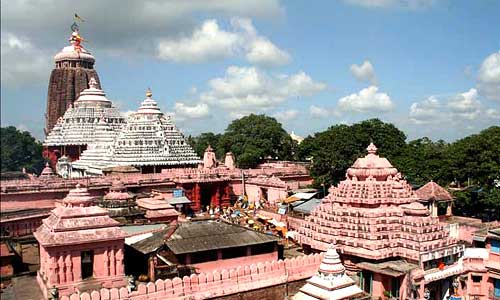 Bhubaneswar, May 22: An expert team of the Archaeological Survey of India (ASI) today inspected the 12th century Jagannath temple in Puri to find out whether the earth quake that hit the state yesterday had any impact on the temple.
Bhubaneswar, May 22: An expert team of the Archaeological Survey of India (ASI) today inspected the 12th century Jagannath temple in Puri to find out whether the earth quake that hit the state yesterday had any impact on the temple.
The team visited the temple following an SoS by chief temple administrator Arvind Padhee to the ASI to examine the structure.
Temple administration sources said a team of engineers, led by the deputy archaeological superintending engineer Tapan Bhattacharya, today inspected the temple. “Keeping in mind the vast structure of the temple, it is difficult to find out minor cracks suddenly and the loosening of plasters of the structures at various points. However, the temple is safe at this moment,” said a senior official.
According to the ASI report, the structure is standing on the southeast direction from the garbha griha (sanctum sanctorum) of the main Jagannath temple in which direction a fault line is suspected as several structures were affected in this direction during earlier earthquakes. “It is advisable to regularly monitor and check for any sign of distress on the temple structure,” the report said.
The ASI, which was accorded the task of protecting the complex in 1974-75, has taken up a detailed survey of 103 shrines on the premises spread over 10 acres. The technical committee has suggested that there is need for deplastering, water tightening, joint sealing and replacement of stones.
In many cases, peeling of plaster, weak and dead plaster, cracks on plastered surfaces of the pillars and broken floor have been noticed. The iron beam used in the temple has also become weak coming in touch with the saline wind blowing from the sea.
Deputy archaeological superintending engineer Tapan Bhattacharya said: “The temple is safe and there is nothing to worry.” He said the Sun Temple at Konark was also safe. But in Bhubaneswar, the Brahmeswar temple developed cracks and some stones fell down from the structure.
Special relief commissioner P.K. Mohapatra said: “The earthquake had its impact in all the 30 districts. There have been reports of cracks developing in various buildings. We have asked all the collectors to submit reports.”
While the state government officials played down the impact of the earthquake, geophysicist and former deputy director-general of the Geological Survey of India P.N. Nayak said Puri was sitting on a time bomb. In February 2012, he had predicted a disaster was likely to happen. The Telegraph had carried a report in this regard. “This (last night’s quake) may be a fore shock. More earthquakes may follow,” Nayak warned.
On April 17 last year, he had said there was an earthquake at Astarang near Puri with a magnitude of 3.4 in the Ritcher scale and no one took the incident seriously.
“The rise of water level of the sea in Puri five days ago on May 15 is the precursors of a disaster and now the earthquake hit the state, affecting the coastal belt,” Nayak said.





